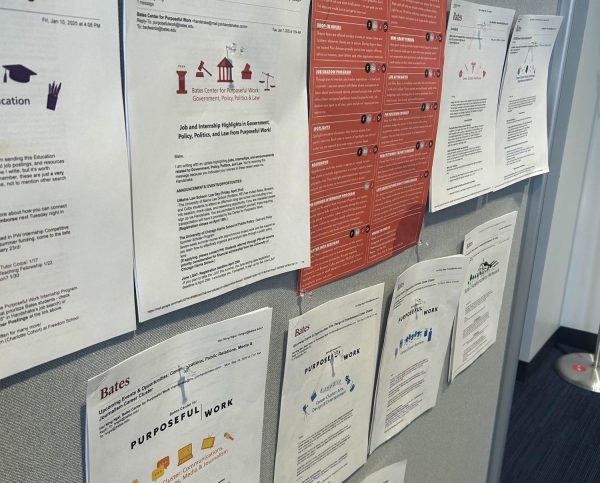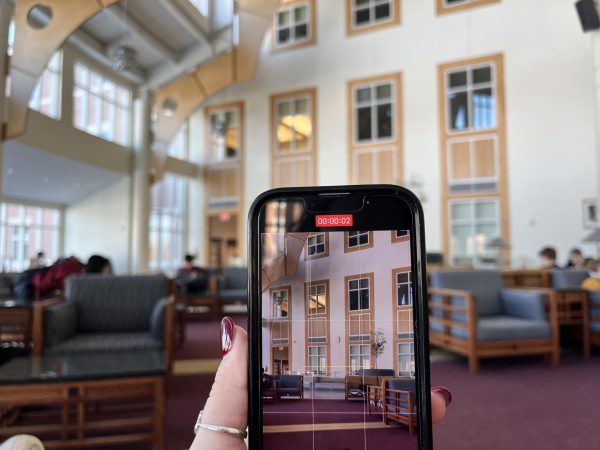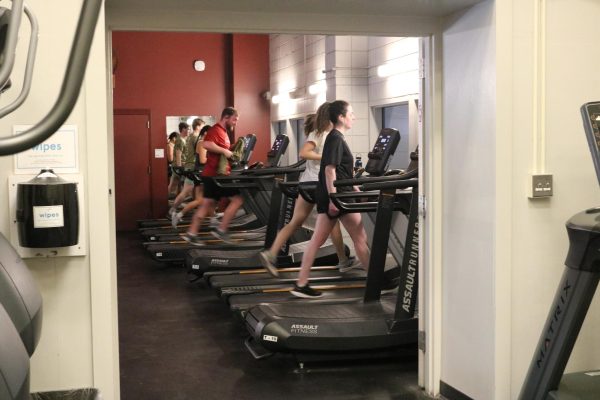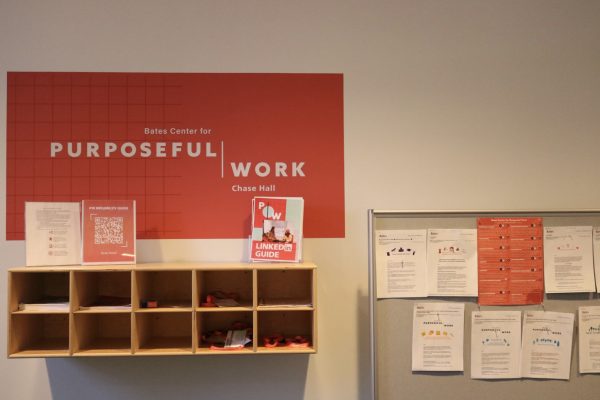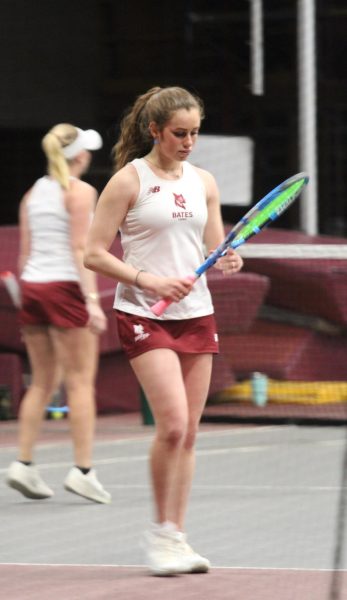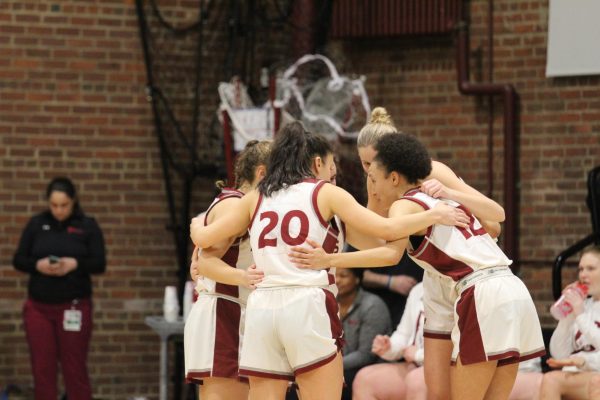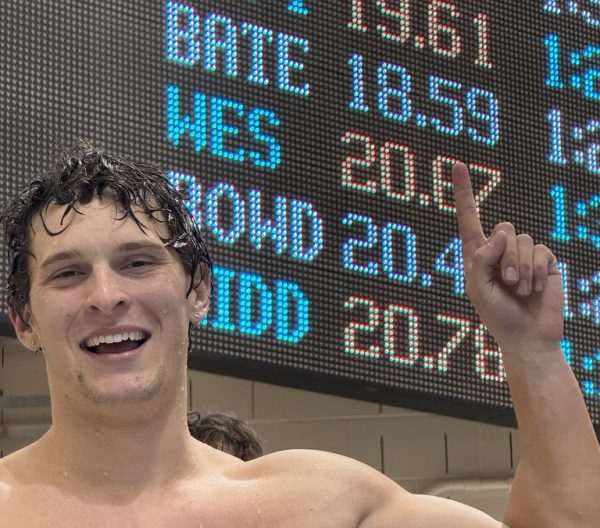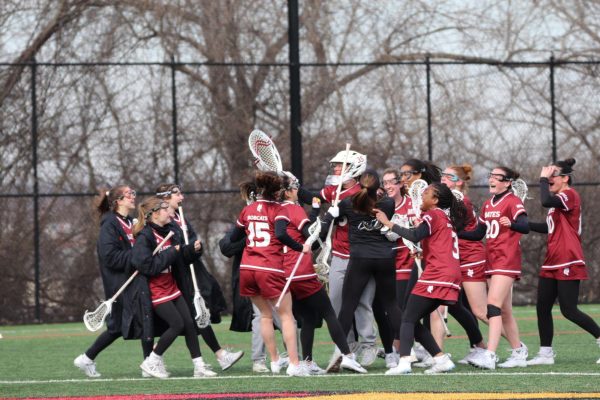Reconsidering Masks and Indoor Sports
Masks have got to go for endurance exercise indoors. One might say that this issue is insignificant in the grand scheme of public health, and I wholeheartedly agree. Amidst a global pandemic, a sport like indoor track is hardly relevant; it quite literally involves running in circles. With this said, my view on the issue simply attempts to resolve inconsistencies in our school’s COVID-19 masking policies and shed light on the frustrations they have caused.
As we move into fall, the inevitable return to indoor sports looms, and the Bates administration will have to decide whether or not to require masks indoors. As it stands, masks are not required in residence halls, while eating in Commons and in private study spaces. However, they are mandatory in other indoor spaces, such as Merrill and Underhill.
In a recent meeting with sports captains and coaches, Director of Athletics Jason Fein responded to the question of masks indoors saying, “We will cross that bridge when we get there.”
And yet, logic would follow that masks should not be mandatory in sports that constrict one’s breath when they are not mandatory to vibe in your common room with your friends. This is not to say that competing isn’t an immense privilege. It is. But blatant denial of these contradictions leads one to believe that our mask policy is more a PR stunt than a comprehensive health policy.
If masks limit the spread of COVID-19 on an indoor track, but not in dorm rooms, then public visibility is clearly the criteria for assessing where to have a mask mandate. In fact, I would contest that wearing masks in a dorm is far easier than running 3 miles on the track with one on.
There is optimism that spreading COVID-19 to the greater Lewiston/Auburn community is no longer a major concern. At present 64.1% of Androscoggin County has gotten at least one dose of the vaccine, and deaths are down as cases continue to rise. Soon, many children under 12 will be eligible for vaccination. Therefore, if Bates decides to drop its mask requirement for indoor winter sports, then it can rest assured that these events will not be a catalyst for a super-spreader event. Despite this, Androscoggin County community members are not currently allowed to attend Bates sports events.
Thus, we, as a Bates community, are presented with a choice. We can either continue with our current policies, or we can try and strike a balance between unrestricted sports and keeping the local community safe. As it stands now, we have no exit clause on COVID-19 restrictions, which begets complacency. I would hope that Bates, which prides itself on innovation, seeks to remedy this blind spot.
Potential solutions can be found in Denmark, declaring “victory” against COVID-19 when they reached a vaccination rate of 80% for people 12 and older. Nonetheless, the U.S has struggled to reach this benchmark. Reasons for vaccine hesitancy have been associated with a lack of trust in government and political ideology. Knowing this, vaccine takeup will likely be more drawn out in the United States than other developed countries. This means that promises to lift restrictions if the U.S hits “x” vaccine rate will fall on deaf ears.
As a result, it will be quite some time before the local community, let alone the U.S, hits any sort of satisfactory threshold. This does not mean we should bar the local community from attending competitions or continue to enforce inconsistent mask mandates. Rather, we should ask local community members to wear a mask, as we already do for unvaccinated employees and students, at sports events. This will allow Bates to be more inclusive, and establish a community-institution relationship built on trust.
If this is done properly, Bates athletes, with an emphasis on those involved in endurance exercise indoors, should be allowed to compete without a mask this winter. While the spread of COVID-19 is inevitable to some degree, it doesn’t have to be a debilitating concern with the correct policies. I hope that this article acts as a small step towards achieving that goal and offers a niche perspective amidst a larger institutional conversation about how to move forward as a community.
Your donation will support the student journalists of Bates College and help us cover our annual website hosting costs.

Gabriel is a senior from Bangor, Maine, majoring in politics. He is currently working on a senior thesis examining conditional and unconditional responses...


